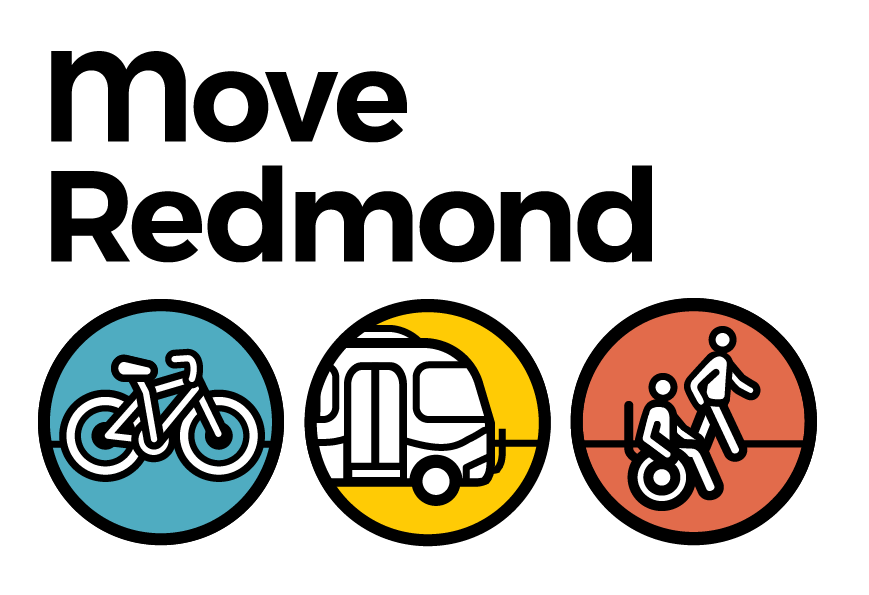2025 Week Without Driving Reflections
By Maritza Lauriano
It has been a few weeks since Week Without Driving and one of the main reflections I had this year is the value of time. This year, I realized how much time and access shape the way people move around.
In recent months, I have built the habit of getting some sort of movement first thing in the morning before starting work. That usually includes a quick gym workout followed by walking my dog in my neighborhood or going to a dog park. During Week Without Driving, I realized that my morning routine would look completely different if I didn’t have access to a car. For starters, there isn’t enough transit service in the morning for me to catch a bus to the gym, and even if I were to go later in the day, it would take me about an hour to get there. My gym is only a 10 minute drive from my home, and about a 30 minute bike ride. The same goes for getting to the dog park. While the dog park I go to is accessible by transit, it would take about 40-50 minutes compared to a 12 minute drive. When trying to fit that in before work, those minutes really matter. If I didn’t have access to a car, I would be limited to how many times I go to a dog park or a park in general and would be limited to when I would go to the gym. Though these two locations aren’t a necessity, it’s something that brings me a better quality of life.
I found myself reflecting on how sometimes transit systems don’t value riders time. When you find yourself waiting an hour for the bus you just missed by a minute, it can make you feel like your own transit system doesn’t value your time. I recognize that I am in a privileged place where I can choose whether or not I drive, but for many families, they don’t have that choice. Walking, biking, and taking transit to where they need to go is part of their daily life and not just a week long challenge. Infrequent transit feels like a punishment, but it doesn’t have to be this way. Investing in frequent transit that is reliable provides dignity for transit dependent people.
It reminds me why Move Redmond’s work is critical to many communities. Advocating for accessible, frequent, and reliable transportation isn’t just about convenience, it is about equity and opportunity. Everyone deserves to live in an area where they can access their job, a grocery store, and parks, and have a great quality of life without having to own a car. It’s about expanding transit to areas that lack accessibility and create the choice of reliably using transit and connecting communities to where they need to go.
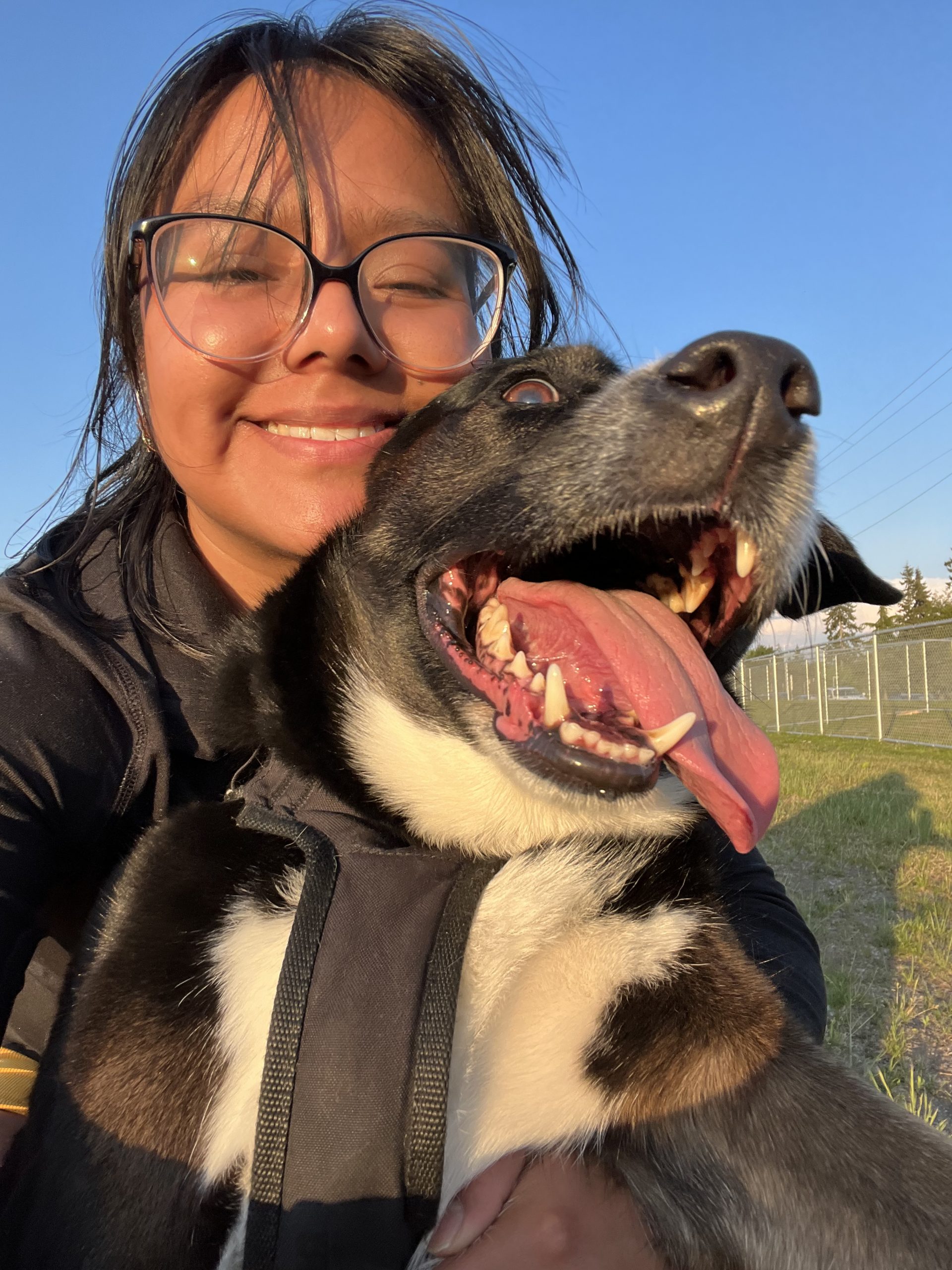
Though Week Without Driving already passed, consider taking up on the challenge anytime throughout the year, as for many, every week is A Week Without Driving.
This year, every Redmond City Council member and candidate participated in Week Without Driving. Check out their reflections below:
We walked in the rain while door-knocking, and it gave me first hand experience of what many people in our city face every day when they rely on walking or public transportation.
Weather challenges are real. When it’s cold, rainy, or dark, even walking to the nearest bus stop can be difficult, especially for seniors, parents with small children, or those carrying groceries. That’s why we must plan for more sheltered bus stops, safer sidewalks, and transit routes within walkable distance of neighborhoods, so weather isn’t a barrier to mobility.
I tried using a Lime scooter — which is a fun and useful option, but it made me think about accessibility and affordability. It can be expensive for residents with limited income, and I even had confusion about where to park it legally. I ended up calling the 1-800 number to confirm I was doing it right! I suggested to the company that they add a feature in the app to help users identify approved parking zones.
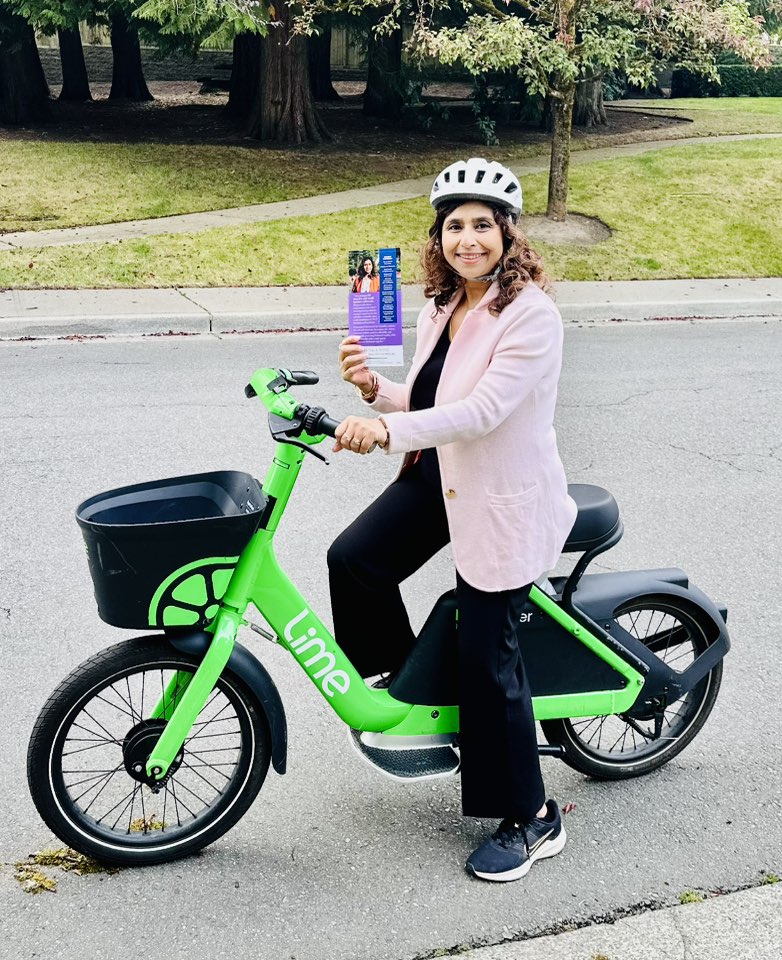
One of my volunteers doorbelling in the Education Hill neighborhood faced her own challenges. Her phone battery died while she was out, and she struggled to find access to a restroom or a working Lime scooter nearby. It made me realize how reliant our mobility systems are on smartphones, and how difficult that can be for people who don’t have access to technology or reliable battery life.
And as I walked uphill carrying my bag, I couldn’t help but think of car-less single moms, seniors, or families who do this every day — walking long distances with kids or groceries, often uphill and in the rain. It’s not easy, and we can do better. Honestly, I felt privileged to drive a car and felt bad for people without cars.
These experiences reminded me that transportation is not just about infrastructure — it’s about dignity, safety, and accessibility.
As Redmond grows, we need to design our transit systems with empathy and inclusion — planning for real people and real conditions, not just ideal ones. Sheltered stops, affordable last-mile options, better lighting, and more frequent service can make everyday travel easier for everyone.
It’s only one week, but I’m already gaining a deeper understanding of what “mobility equity” really means. This week is about walking in others’ shoes, literally and finding solutions that make Redmond a city that moves with its people.
1.Were there any trips that you couldn’t make without driving?
No. I had to carpool to the grocery store though to make that work.
What kind of transportation investments would make it possible for a non-driver in our community to take that same trip?
Even though I didn’t experience issues with walking or with taking the bus, I did notice that I wouldn’t have easily been able to store my bike safely so I ended up not using that mode of travel.
2. Was there anything you enjoyed about shifting from driving to transit, walking, biking or carpooling?
The weather was great.
3. The City of Redmond has made a lot of investments in and around light rail in the past few years. Were there any investments that made your trip easier/ safer that you want to highlight?
I didn’t use the light rail and didn’t have a reason to be near it. I do enjoy the new trail between the light rail downtown station and Marymoor Station.
4. Is there anything else that you would like to share with us?
I found the use of apps for transit passes to be more confusing than necessary for payment. I also thought the stations with tap before ride was unusual and I expected to see those made more visible or marketed.
OneBusAway is still great. Love that.
This is a nonsequitur but I would like to see more non-smoking signs around the stops. This would make traveling by bus more pleasant.
Check out Councilmember President Vanessa Kritzer’s post during WWD:
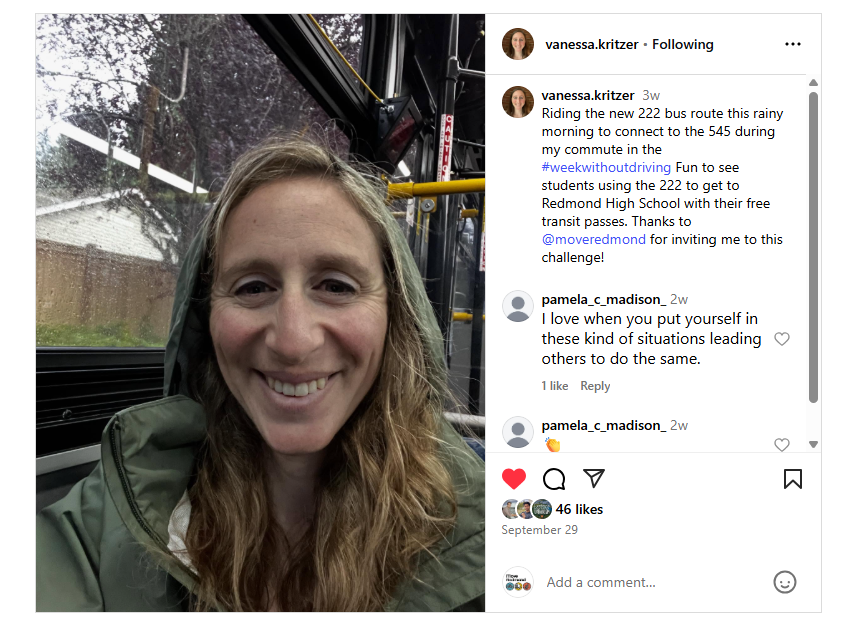
Councilmember Vice President shared some quick thoughts with us during Week Without Driving. Check the out below:
“The Week Without Driving Walk and Talk offered a chance to listen to community members about accessibility challenges and successes in Downtown Redmond. It was wonderful to hear about how safety improvements, like the all-way crosswalk at 166th have worked well. The Week Without Driving also highlights the need to invest in transit frequency and first/ last mile connections to support the needs of non-drivers.” – Councilmember Melissa Stuart
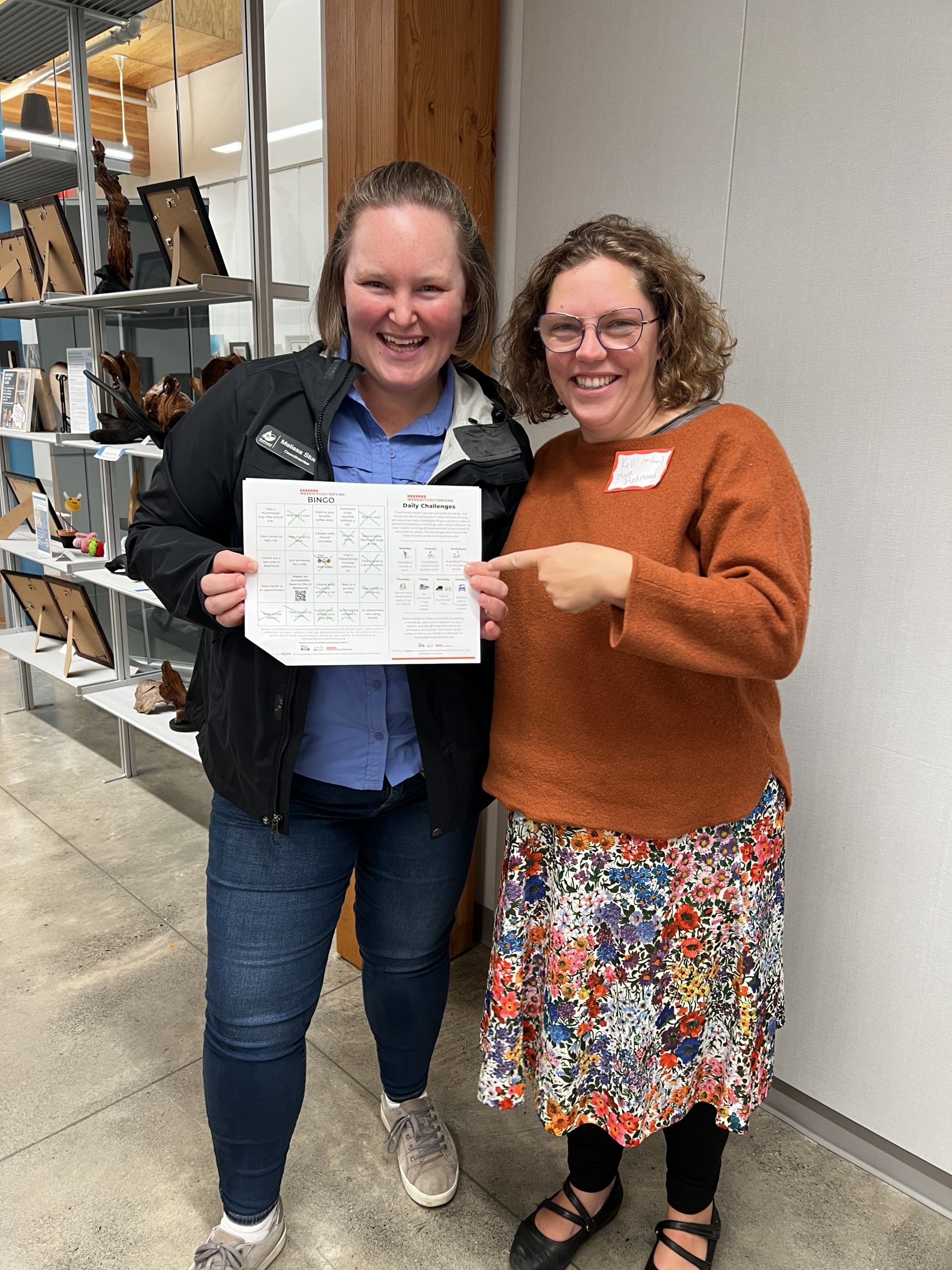
Councilmember Steve Fields agreed to participate in the Week Without Driving Challenge but has not shared reflections to Move Redmond.
Redmond City Council Candidate Vivek Prakriya agreed to participate in the Week Without Driving Challenge but has not shared reflections to Move Redmond.
Councilmember Angie Nuevacamina agreed to participate in the Week Without Driving Challenge but has not shared reflections to Move Redmond.
Move Redmond briefly met with Rep. Osman Salahuddin for a candidate ride along and also took advantage of capturing his Week Without Driving Reflections. Stay tuned for the 48th LD candidate ride alongs!
